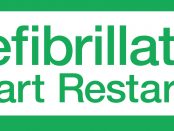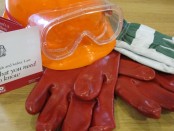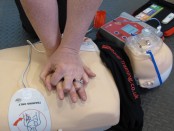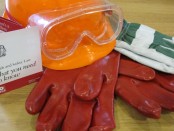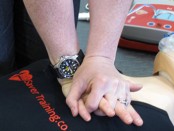New AED Location Sign & Information Poster
Following extensive research and public consultation, the Resuscitation Council (UK) and the British Heart Foundation have developed a new UK AED location sign and a supporting information poster, the new sign has been accepted by the HSE. The aim of the new sign and information poster is to ensure that more people understand what AEDs are used for and are encouraged to use them. The new AED location sign makes the following changes to the current one: It changes the lightning bolt icon into a stylised ECG heart trace – respondents overwhelmingly said they would be more likely to use a sign with this icon on. The description is changed to “Defibrillator – Heart Restarter” – respondents said they thought this term would most encourage [More…]

